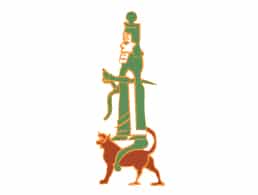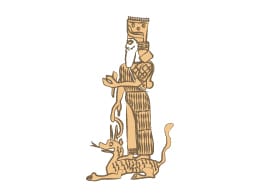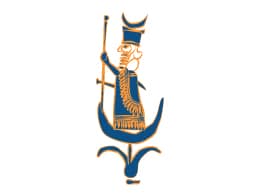There are hundreds gods, goddesses and other demons or geniuses in the ancient Mesopotamian world.
Gods and goddesses are “living” in a city: their fate is linked to the political history of their city. They are strong when the city is powerful, weak when the city declines...
So many gods in my
world! It is difficult to know
everything about them!
Many myths and legends tell us about the powers and achievements of the gods. Their adventures are amazing and the relationships between them often quite complex.
Meet some of them!
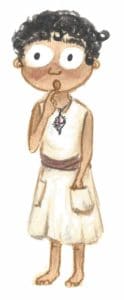
Marduk

But when the city is later conquered by the Assyrian king Sennacherib in 7th century B.C., Marduk (i.e. his statue) is taken to Assyria like a prisoner. He is, however, brought back to Babylon by Sennacherib’s successor, who also rebuilds Marduk’s temple.
The god will regain his powers to the full in the Neo-Babylonian period when Babylon is again the capital of an empire.
The Babylonian epic of creation, enūma eliš:
It was written to the glory of Marduk. It describes how the young god Marduk, son of Ea, is given the full powers by the other gods to fight against Tiamat, goddess of the ‘salt waters’. Marduk defeats her, then uses her body to create the world. He furthermore has the idea to create humankind to relieve the gods of their hard work.
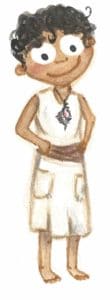
I know enūma eliš by heart!
I will tell it to you one day!
Ea
He is the father of Marduk. His city is Eridu. He is the god of the subteranean freshwater ocean (abzu, apsû). He is mostly associated with wisdom, magic and incantations; he plays a major role in the birth of civilisation and is often seen as favourable to mankind.
Enlil
He is one of the most important gods in the Mesopotamian pantheon. He is usually called king, supreme lord, or creator and described as a "raging storm" or a " "wild bull". Despite these prestigious epithets, a Babylonian myth describes him terrified by the rebellion of the minor gods and shivering with fear in front of them! He has plenty of prestigious children, amongst them Ištar, Sîn and Ninurta. His city is Nippur.
Ištar
The goddess of love and war is the most important female deity of ancient Mesopotamia in all periods. Her city is Uruk. She is not a mother goddess: she has neither spouse nor children. But she has numerous lovers. The fate of the most famous one, Dumuzi the sheperd, is unfortunate: he is killed by bandits from the mountains. Ištar is also the planet Venus, morning and evening star.
Ninurta
The son of Enlil, is a very ancient Mesopotamian god. He is above all a warrior: several myths relate his formidable fights and victories. Amongst others, he challenged the terrifying Imdugud (a gigantic eagle with the head of a lion) after the latter had stolen the Tablet of Destinies from Enlil. Following Ea’s wise advice, Ninurta defeated the monster. Ninurta furthermore plays the role of a farmer god.
Nabû
The Mesopotamian scribe god is also the god of wisdom because knowledge was transmitted through writing. From the end of the second millennium on, he was regarded as the son of Marduk, and often "visited" his father in Babylon. The god is sometimes shown riding on the back of a snake-dragon, but we know no myths about him.
Sîn
The moon-god, is the son of Enlil and the father of Šamaš (the sun god). His most important shrine in southern Mesopotamia was in Ur. Though very popular, he always remained subordinate to the chief gods of the pantheon. For this reason, he travels a lot to visit them and pay his respect.


